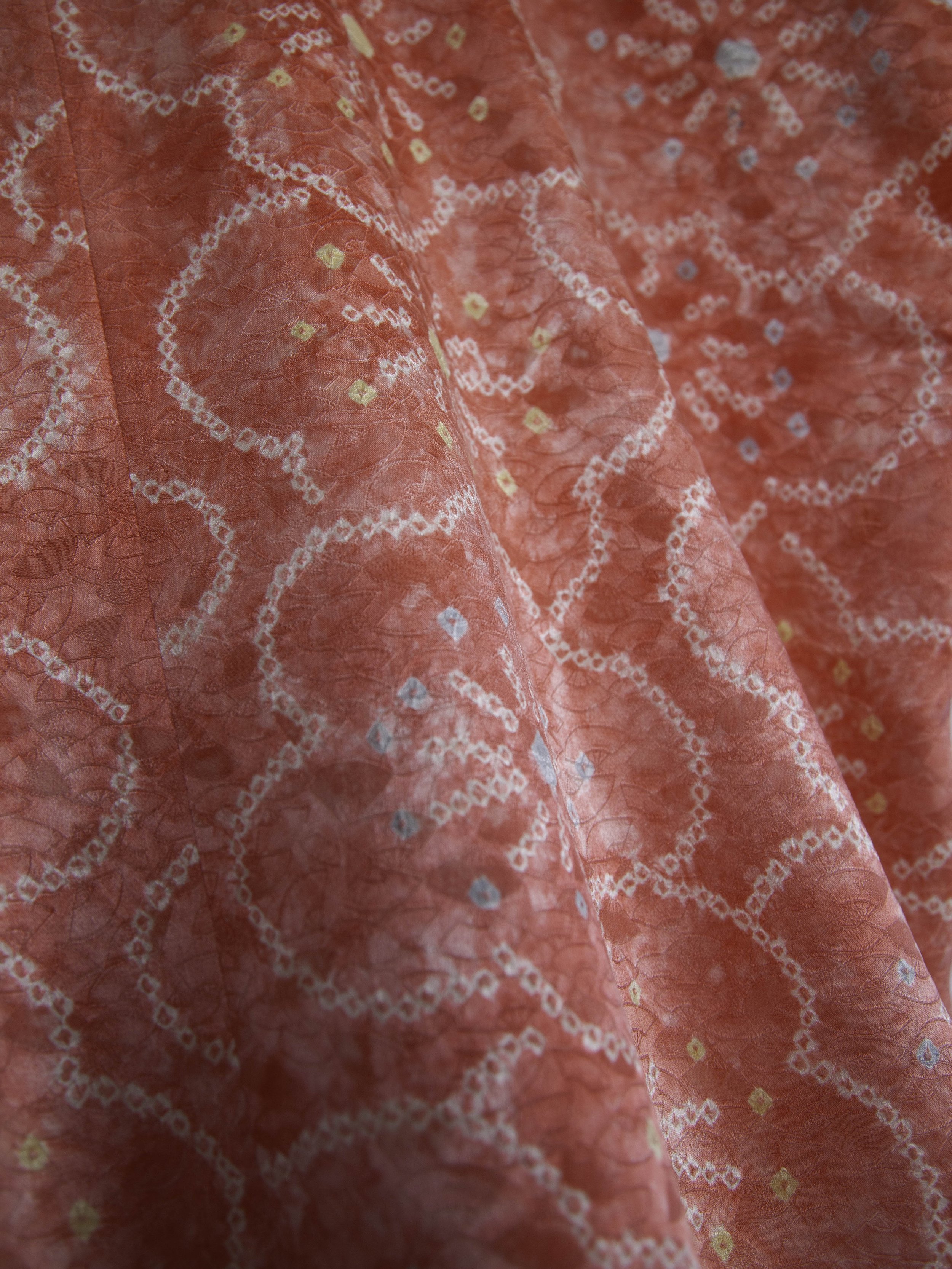Pink Ume Shibori Kimono Top
This top is made from a vintage Shibori Komono. Shibori 絞りis a traditional Japanese manual resist dyeing technique, which produces distinctive patterns on textiles. The earliest known example of cloth dyed with a Shibori technique dates from the 8th century. The design features Umé 梅 or plum blossoms. Plum trees were initially introduced to Japan from China and were considered ornamental trees intended for the gardens of the nobility and public spaces. Associated with good fortune, plum blossoms, plums, and the trees are thought to ward off evil. They are often planted around shrines, temples and other spiritual areas.
Traditionally, Kimonos are constructed from narrow bolts of silk that are cut into eight rectangular pieces, then folded and overlapped to fit the body. At any time, the pieces can be taken apart and sewn back together to accommodate size changes. This method of construction does not produce any waste. As a nod to this zero-waste philosophy, this top is made using the full width of Kimono silk and features a rounded neckline.
Flat garment measurements
Width: 70cm / 27.5 in
Length: 56cm / 22 in
Fits up to US 16
100% silk
dry clean only
Iron inside out on medium setting
***This is a special price due to dye oxidation on the right front of the top. Please see main photo as well as details. Final sale
This top is made from a vintage Shibori Komono. Shibori 絞りis a traditional Japanese manual resist dyeing technique, which produces distinctive patterns on textiles. The earliest known example of cloth dyed with a Shibori technique dates from the 8th century. The design features Umé 梅 or plum blossoms. Plum trees were initially introduced to Japan from China and were considered ornamental trees intended for the gardens of the nobility and public spaces. Associated with good fortune, plum blossoms, plums, and the trees are thought to ward off evil. They are often planted around shrines, temples and other spiritual areas.
Traditionally, Kimonos are constructed from narrow bolts of silk that are cut into eight rectangular pieces, then folded and overlapped to fit the body. At any time, the pieces can be taken apart and sewn back together to accommodate size changes. This method of construction does not produce any waste. As a nod to this zero-waste philosophy, this top is made using the full width of Kimono silk and features a rounded neckline.
Flat garment measurements
Width: 70cm / 27.5 in
Length: 56cm / 22 in
Fits up to US 16
100% silk
dry clean only
Iron inside out on medium setting
***This is a special price due to dye oxidation on the right front of the top. Please see main photo as well as details. Final sale
This top is made from a vintage Shibori Komono. Shibori 絞りis a traditional Japanese manual resist dyeing technique, which produces distinctive patterns on textiles. The earliest known example of cloth dyed with a Shibori technique dates from the 8th century. The design features Umé 梅 or plum blossoms. Plum trees were initially introduced to Japan from China and were considered ornamental trees intended for the gardens of the nobility and public spaces. Associated with good fortune, plum blossoms, plums, and the trees are thought to ward off evil. They are often planted around shrines, temples and other spiritual areas.
Traditionally, Kimonos are constructed from narrow bolts of silk that are cut into eight rectangular pieces, then folded and overlapped to fit the body. At any time, the pieces can be taken apart and sewn back together to accommodate size changes. This method of construction does not produce any waste. As a nod to this zero-waste philosophy, this top is made using the full width of Kimono silk and features a rounded neckline.
Flat garment measurements
Width: 70cm / 27.5 in
Length: 56cm / 22 in
Fits up to US 16
100% silk
dry clean only
Iron inside out on medium setting
***This is a special price due to dye oxidation on the right front of the top. Please see main photo as well as details. Final sale





